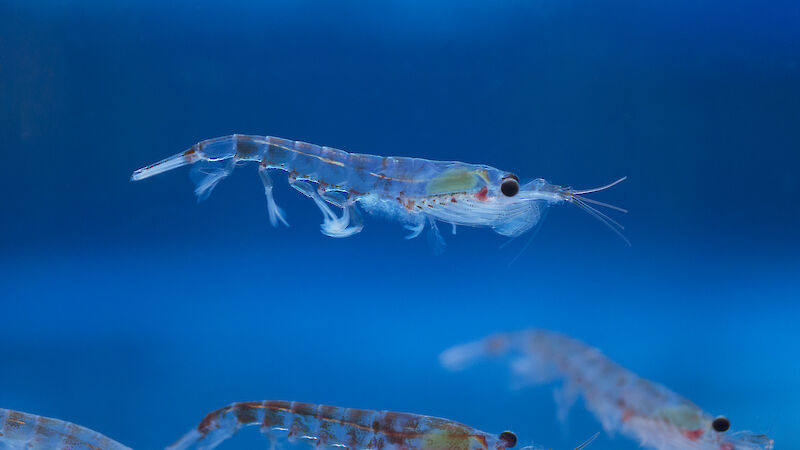Some populations of Antarctic krill are shifting south, closer to Antarctica, as ocean warming and sea-ice changes alter their habitat.
Scientists fear the movement of krill will have a negative impact on predators like whales, seals and penguins, and alter broader ocean ecosystem functions.
The finding, published in Nature Reviews Earth & Environment today, comes after an international scientific team, led by Australian Antarctic Program krill scientist Dr So Kawaguchi, reviewed decades of published Antarctic krill research.
The team found krill populations and habitats have shifted south in the ‘Southwest Atlantic sector’ of the Southern Ocean, off the Antarctic Peninsula (see map below).
They also observed a decline in the density of krill in the sector, north of 60°S – an area that supports a major krill fishery.

Photo: Brett Wilks
Dr Kawaguchi said the changes could have significant flow-on effects for krill behaviour and physiology, predator interactions, and krill’s important role in removing carbon from surface waters to the deep ocean.
“Analysis of a krill dataset collected over more than 50 years, showed habitat contraction in the Southwest Atlantic sector was associated with a reduced occurrence of krill swarms in the northern extent of the habitat, and a decline in krill density,” Dr Kawaguchi said.
“There is also a major disruption in the characteristics of krill populations in the Southwest Atlantic sector, driven by rapid climate change that has resulted in a decrease in the annual sea-ice season by three months. This has reduced critical habitat for adult and juvenile krill.”








